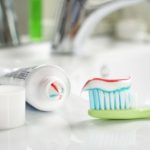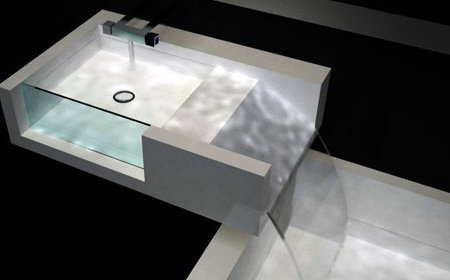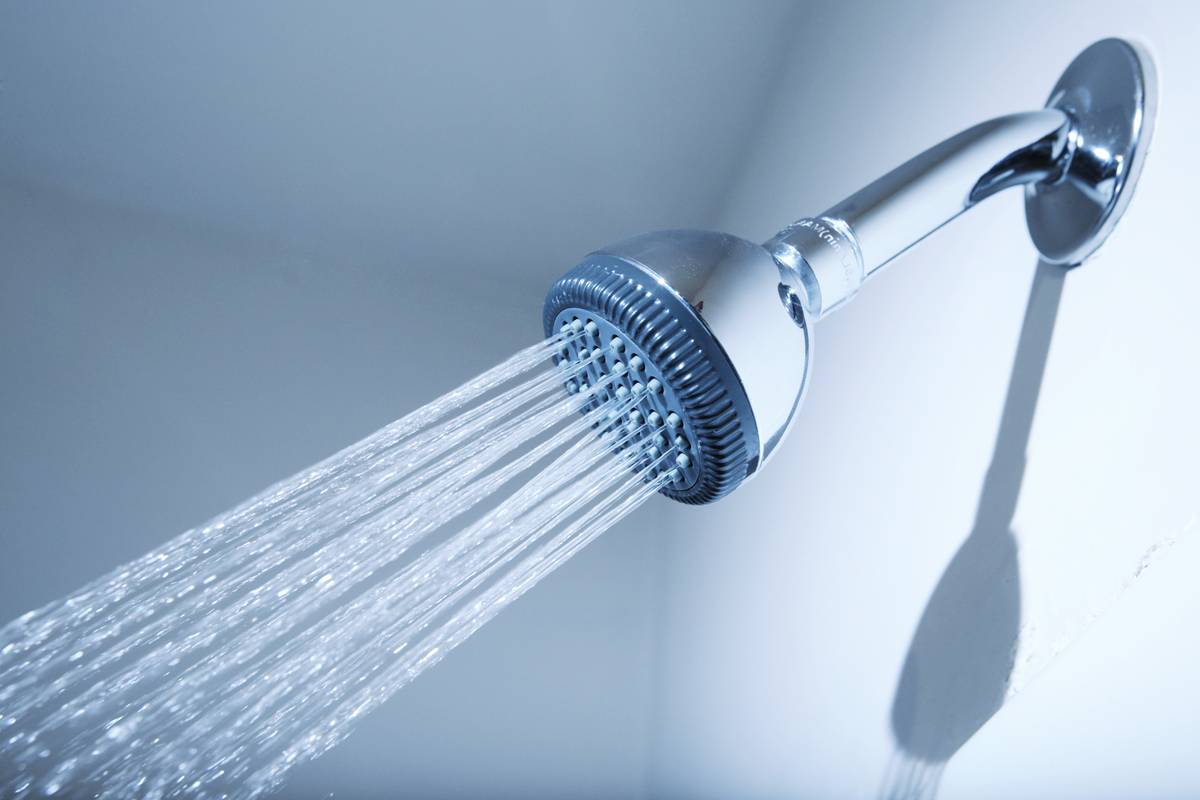Why does the enamel in the bathtub turn yellow and how to avoid it
Any thing in our home, unfortunately, loses its presentable appearance over time. This is especially true for the surfaces of objects with which residents most often come into contact: kitchen countertops, sinks and bathtubs. The latter often loses its whiteness and becomes covered with ugly yellow spots. This mainly happens due to impurities that tap water contains. But sometimes the cause of this phenomenon is poor or improper care of the enamel. Let's look at what can be done to restore a beautiful look and whiteness.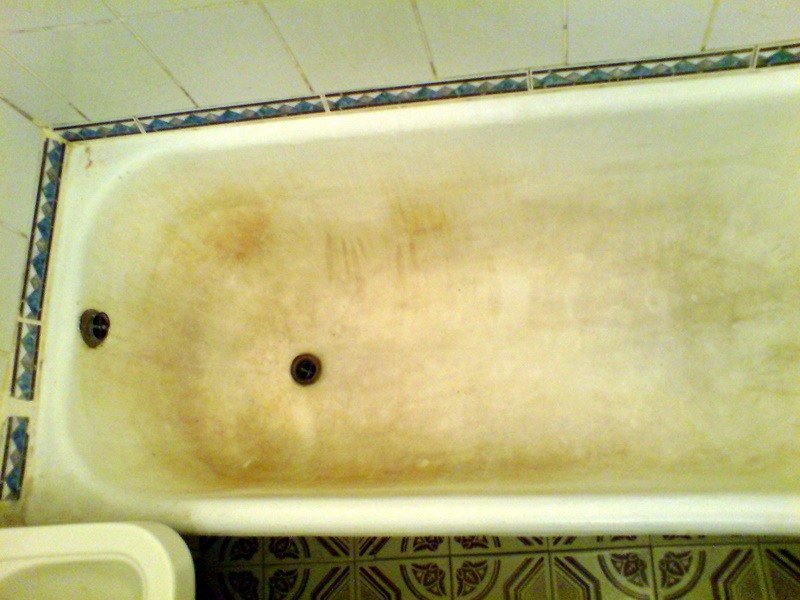
The content of the article
How to renew a bathtub if its surface is worn out and yellowed
Sometimes such a nuisance can appear within a few months after installation. Therefore, before you begin to fix the problem, it is worth understanding the reasons for its occurrence. You can tell by its appearance:
- Rust stains. They are distinguished from other manifestations by their brown-red hue. This drawback is typical for bathtubs located in old buildings in which metal pipes were used for water supply. Over time, the metal corrodes and enters the water, subsequently settling at the point of contact with the surface.
- Yellowish spots or streaks may appear due to the chlorine contained in the water.
- If hard water flows from your tap, then over time a limescale deposit will form on the surface of the bathtub. If you don't pay attention to it in time, it will be difficult to get rid of it.
Reference! Tap water in large cities is often chlorinated to remove harmful bacteria. It is not recommended to drink such water.
At home, without resorting to the services of specialists, you can get rid of yellowness in two ways. The first is with the help of special household chemicals. The second is the use of folk remedies.
Using household chemicals
The easiest cleaning method is to use household chemicals. Now you can find many suitable options on store shelves: Sanfor, Domestes, Chiston and so on. They all have a similar effect:
- remove rust;
- fight bacteria, mold and mildew;
- get rid of limescale.
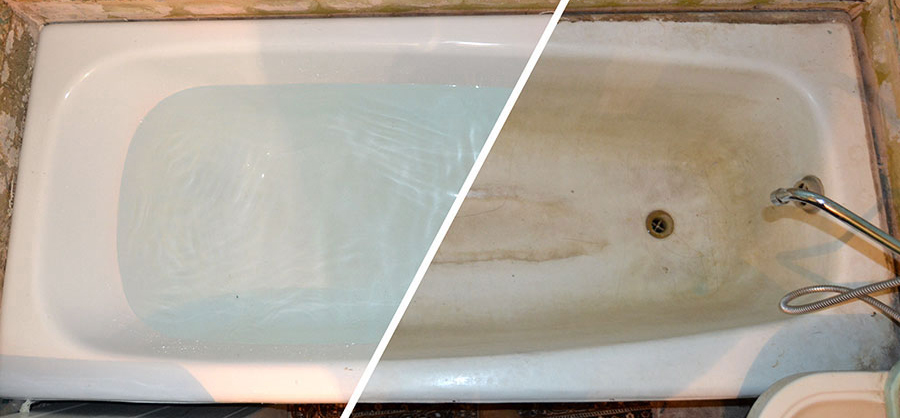
In addition to the above, these substances have a pleasant odor. You need to choose them according to personal preferences. Do not forget that these products are quite aggressive, so when working with them, use personal protection - rubber gloves.
Attention! To make sure that the substance is suitable for your type of coating, treat a small area with it and check the reaction.
Using folk remedies
These products are not suitable for people with sensitive skin or intolerance to chlorine. They can cause harm to health. In this case, you can use traditional methods. To restore whiteness, the following products will be useful:
- Baking soda. It is present in the kitchen of any housewife. The remedy will help you get rid of the problem if you make an effort. To do this, sprinkle a thin layer of powder onto the area to be cleaned.After fifteen minutes, slightly moisten the soda. After the same amount of time has passed, wipe the surface with a sponge. Repeat the procedure three more times. Then rinse the surface with warm water.
- Lemon acid. The best home remedy for rust stains. To use, dissolve 25 grams in a glass of water and treat contaminated areas with the mixture. Repeat this action three more times at intervals of half an hour. Then rinse the bathtub with clean water and ventilate the room thoroughly.
- Vinegar and salt. Mix vinegar (half a glass) and salt (4 tbsp) and heat slightly. Apply the solution to problem areas. After twenty minutes, rinse with clean water.
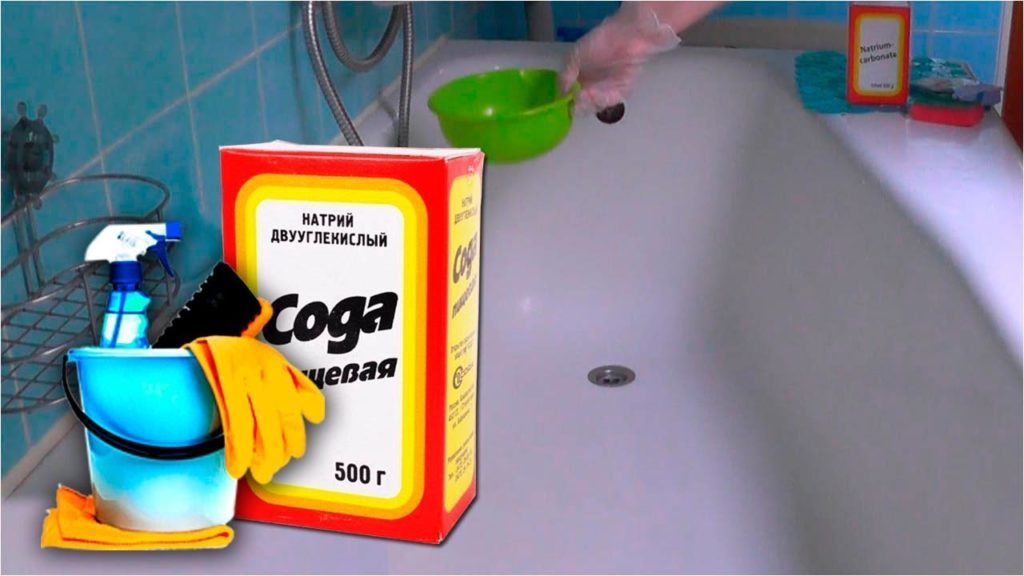
Reference! If you mix baking soda and hydrogen peroxide in a 2/1 ratio, you will get a much more effective remedy for combating yellowness and limescale.
Why does the bathtub turn yellow?
The main reason for yellowing of the bathtub is poor water quality. But sometimes the housewives themselves are to blame for this. The result of errors in care is the loss of a presentable appearance. To prevent this from happening, you need to follow a number of simple rules:
- The coating should be cleaned only with a product that is suitable for it;
- After each use, the bathtub should be rinsed with warm water;
- once a week it is required to clean using special products;
- Soap deposits should be removed promptly; over time, they can turn into limescale.
Try not to expose the coating to sudden changes in temperature: this can lead to cracking of the enamel and weakening of the protective layer. To improve water quality, you can use a filter that is installed in the water supply system.

